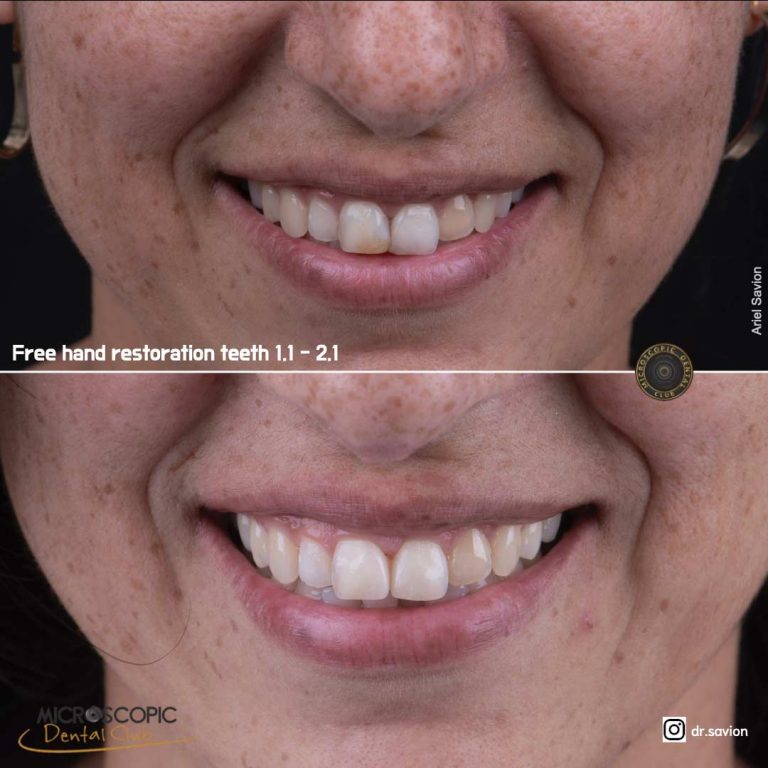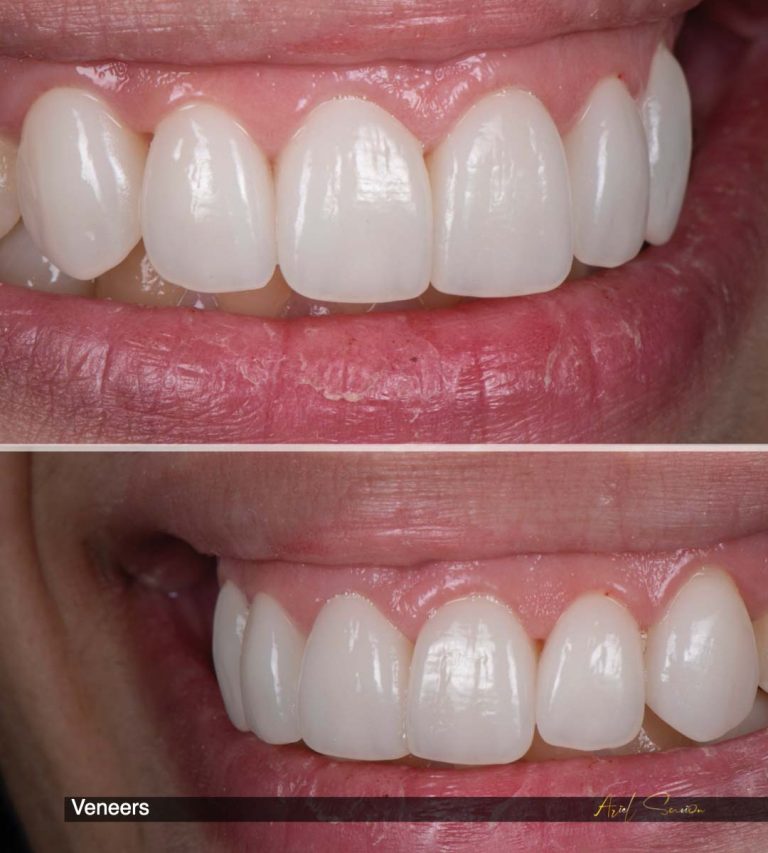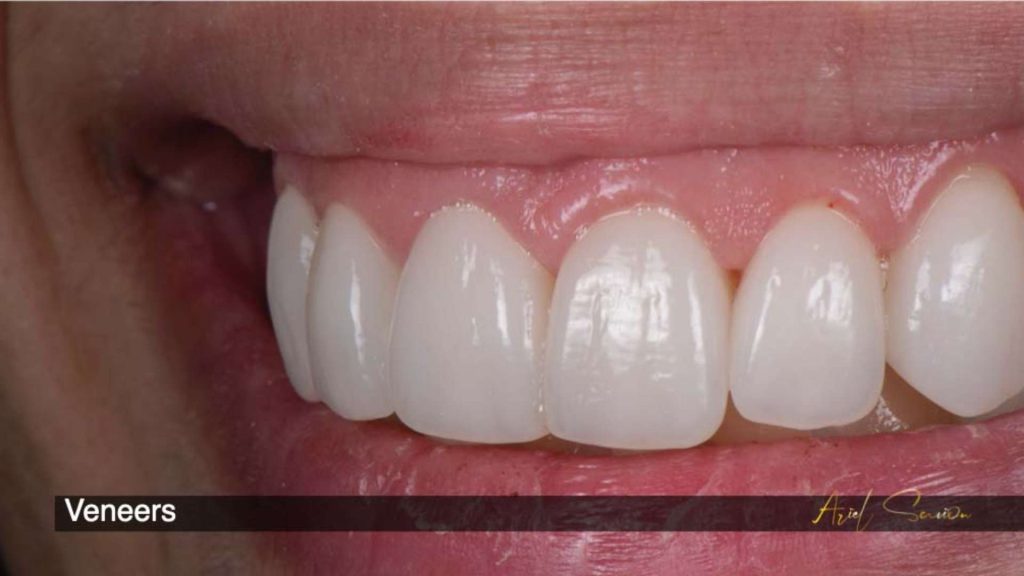A smile is the calling card of our face, the feature that instantly draws attention when we meet someone. It shapes the first impression long before a single word is spoken. At times, one smile can shift the entire atmosphere, open doors, and create a sense of closeness even between people who have never met before.
Patients commonly seek improvement of teeth that are discolored, chipped, slightly misaligned or otherwise unaesthetic. In many cases a direct composite resin veneer solves the problem with minimal intervention.
Dr. Ariel Savyon
Dentist since 2007, holds a double master's degree (Germany) in laser science and implantology (dental implants).
Serves as medical director of the dental corporation "Savyon Medical Center Ltd. Owner of a prestigious study club master_implant, treating dentists in various fields. The only certified instructor in Israel of the World Clinical Laser Institute in the field of laser science in dentistry in Israel.
Dr. Savyon, an opinion leader for leading companies in Israel and around the world, a researcher and international lecturer in the field of laser dentistry, periodontal medicine, and dental implants.

What is a composite resin veneer?
A composite resin veneer is a thin layer of tooth-colored restorative material bonded directly to the tooth surface. The material is a resin-based composite applied in layers and cured with a light. Typical application thickness ranges from about 0.2 mm up to approximately 1.0 mm. When placed correctly the restoration delivers a natural appearance and restores form and function while preserving tooth structure.
Direct composite veneers are indicated for minor shape corrections, closing small diastemas, repairing chips, masking localized discoloration and for aesthetic enhancement when minimal tooth preparation is preferred. patient’s selection should consider occlusion, parafunctional habits, color stability requirements and the patient’s expectations.

Advantages and limitations
Advantages and limitations are summarized here to aid treatment planning:
Advantages
- Single-visit procedure in most cases.
- Short chair time; typical session ranges from about one hour to an hour and a half for a limited number of teeth.
- Minimal or no tooth preparation in many cases.
- Lower cost compared with indirect ceramic veneers.
- Localized repairs are possible without full replacement.
Limitations
- Requires ongoing maintenance and periodic review; annual recall is commonly recommended.
- Composite resin is susceptible to staining from dietary pigments and tobacco.
- Surface wear or loss of gloss can occur over time and may require re-polishing or localized repair.
- Durability is generally lower than that of ceramic restorations.
Clinical procedure and steps
The clinical workflow for direct composite veneers typically includes the following steps.
- Oral hygiene and cleaning of the teeth, with special attention to the teeth to be veneered.
- Shade selection to match adjacent teeth for a natural integration.
- Local anesthesia when needed for patient comfort.
- Adhesive protocol and incremental placement of composite material, shaped to the desired anatomy, then light-cured.
- Final finishing, polishing and application of a surface sealant to improve longevity and gloss.
Expected longevity and maintenance
Direct composite veneers are not considered lifetime restorations. Average clinical longevity is commonly reported in the range of a few years; maintenance is expected. Typical maintenance after the first year may include polishing, repair of small chips or re-bonding of localized areas. Regular dental follow-up, attention to oral hygiene, and avoidance of excessive mechanical or chemical wear extend the functional life and appearance of the restorations.
How many teeth can be veneered?
Composite veneers may be applied to a single tooth or to multiple teeth, depending on aesthetic goals and treatment planning. The clinician should evaluate symmetry, occlusion and the overall restorative plan when deciding between spot treatment and full-arch anterior restorations.

Composite resin versus porcelain veneers, key differences
Composite resin (direct) | Porcelain (indirect) | |
Number of visits: | Usually 1 visit or a few short appointments | Typically 2–4 visits (prep, lab work, try-in/cementation) |
Repairability: | Chairside repairs and re-polishing are straightforward | Repair is limited; damaged units usually require replacement |
Cost: | Lower initial cost | Higher initial cost |
Color stability & longevity: | More prone to staining and wear; requires more frequent maintenance | More resistant to staining and wear; longer expected service life |
Composite resin and porcelain veneers represent two distinct restorative approaches. Composite veneers are placed directly on the teeth in the dental chair and are commonly completed in a single visit or a few short appointments. Porcelain veneers are fabricated outside the mouth in a dental laboratory, which typically requires two to four visits for preparation, try-in and final cementation.
The materials differ in how they respond to failure and routine wear. Composite restorations can usually be repaired chairside with additive material and polishing, which simplifies management of chips, marginal defects or local staining. Porcelain is brittle but wear- and stain-resistant; a fractured or significantly damaged porcelain veneer usually requires laboratory replacement rather than a simple in-office repair.
Cost and long-term behavior also differ and should guide treatment selection. Composite veneers have lower cost and allow conservative tooth preparation, but they are more prone to discoloration and surface wear and therefore need more frequent maintenance.
Porcelain veneers have higher costs and often require greater tooth reduction, yet they offer superior color stability and longer clinical service when occlusion and parafunction are appropriately managed.

Patient guidance and expectations
Before we begin, we’ll talk together about your goals for the treatment and make sure the material we choose fits what you’re looking for—both in function and appearance. We’ll go over how long you can expect it to last, what kind of maintenance it might need, any possible changes in color over time, and what we can do if a repair is needed.
You’ll get clear written instructions for home care, and we’ll set up your first maintenance check-up for 6 to 12 months after the treatment is completed.
- Tip: confirm treatment goals and limits before proceeding. Proper expectation management reduces the need for rework and increases patient satisfaction.



















